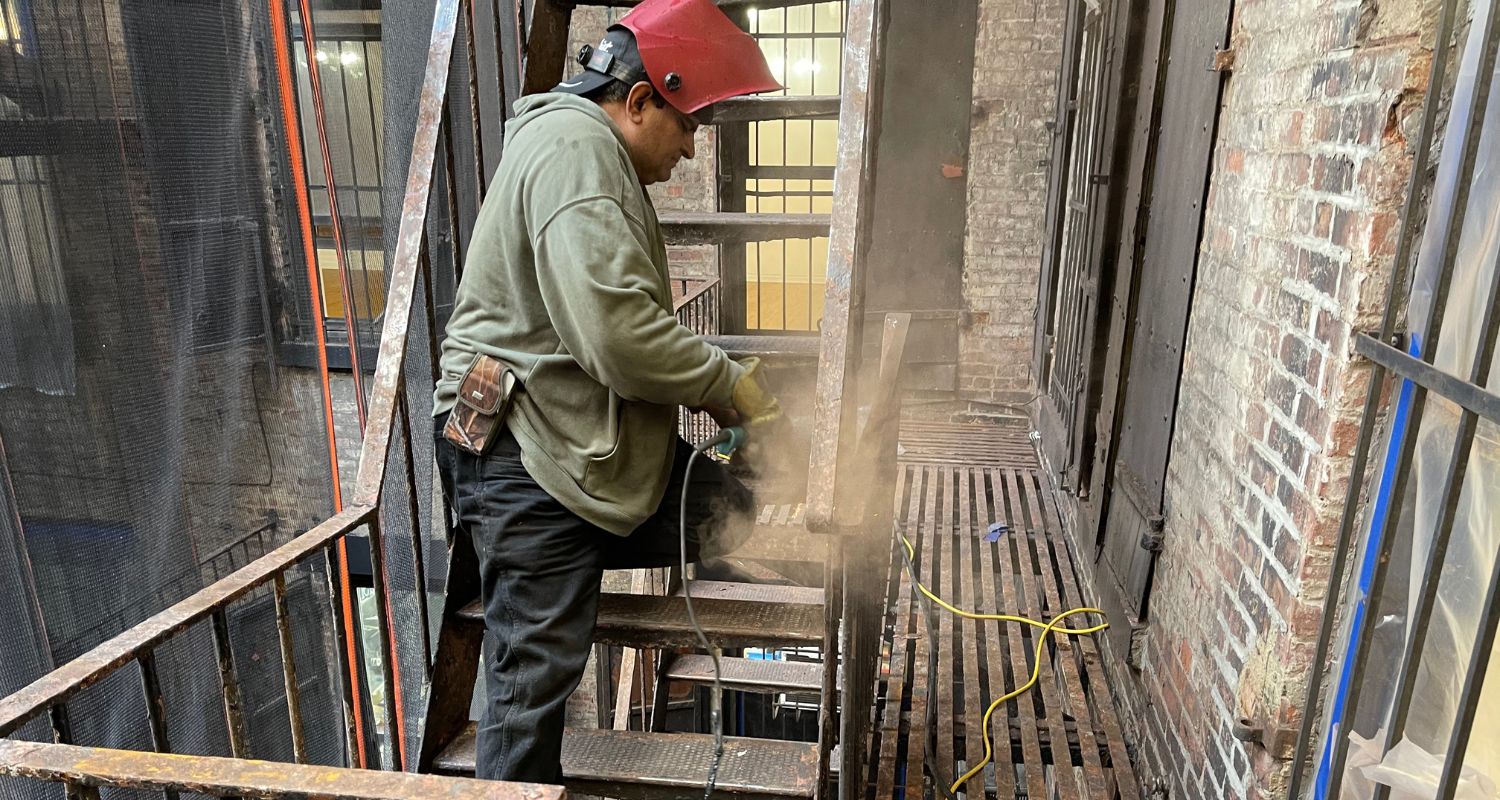-
212-257-1661
- Get a Quote

When Do You Need Fire Escape Restoration?
- Posted On: May 17, 2024
- Posted By: admin
Restoring a fire escape is an integral part of its maintenance. The intricate metal structures attached to a building’s exterior are fundamental for retaining fire safety standards. However, in present times, high-rise buildings often do not have a fire escape due to advanced evacuation means. But, those with fire escapes are poorly maintained and most often do not serve the purpose.
Why are fire escapes installed in the first place? -To ensure safe egress from a building during emergencies like fire breakouts, earthquakes, etc. Unfortunately, property owners ignore the proper upkeep of these structures, resulting in potential threats. In cities like the Bronx, Queens, Manhattan, Long Island, Brooklyn, and Richmond Hill, you will most likely spot a dilapidated fire escape on every street! It necessitates fire escape restoration NYC.
If you are unaware whether your fire escape needs restoration, you are at the right place. We will provide a comprehensive guide on when restoring fire escapes becomes mandatory. So, let’s get started.
Identifying Fire Escape Damage
Fire escape damage is quite prevalent because they are located on the exterior of a building and made of metals like wrought iron and steel. Thus, these structures are constantly exposed to extreme temperatures, moisture, and dirt. So, they are highly susceptible to decay.
Now, what are the conditions demanding a comprehensive restoration service?
- Corrosion- When we speak of metals exposed to moisture and air, corrosion is inevitable. It is the most common cause of fire escape defilement. Corrosion happens when metals like iron and steel combine with water to form oxides. These are reddish-brown flaky substances that deposit on the surface. Corrosion or rusting eats away metals, resulting in gradual disintegration. You need immediate fire escape restoration services if you spot rusting because in no time will you notice your fire escape falling apart!
- Instability- A fire escape becomes rickety and unstable when there is a major structural failure. It can happen due to excessive corrosion or the loosening of the joints. Also, soil erosion or anchorage failure is responsible for a wobbly fire escape. Does your fire escape sound safe? No! It poses a severe threat to the property and lives.
- Inaccessibility- When do you call a fire escape inaccessible? Of course, when you have piles of stock on the stairs or missing guardrails and steps. You cannot think of evacuating a building in a rush through such a fire escape! What if there are missing stairs and you fall? An inaccessible fire escape is of no use. So, call fire escape restoration specialists and get it repaired at the earliest!
- Flaking Paint- Though flaking paint may seem harmless, you are least aware of what lies beneath it! Generally, peeling or flaking paint indicates corrosion. As the paint starts fading or peeling, the metal surface becomes exposed. The paint protects the metal from corrosion. But, when it comes off, you are at risk of rusting. You must remove the old paint, scrape the rust, and apply a fresh coat of paint.
- Missing Bricks or Caulking- Since fire escapes are attached to buildings through penetrations on the brick walls, there may be missing bricks or caulking over time. Bricks can become loose and weak due to weathering and other structural damage. The mortar crumbles and disintegrates, which weakens the brick structure. You must fix the bricks if your fire escape is coming off the building. The structure may collapse without prompt action!
Conclusion
Fire escape restoration cost varies depending on the type, severity, and location of the damage. But in all respects, restoration is a prerequisite, and you must never skip it.

